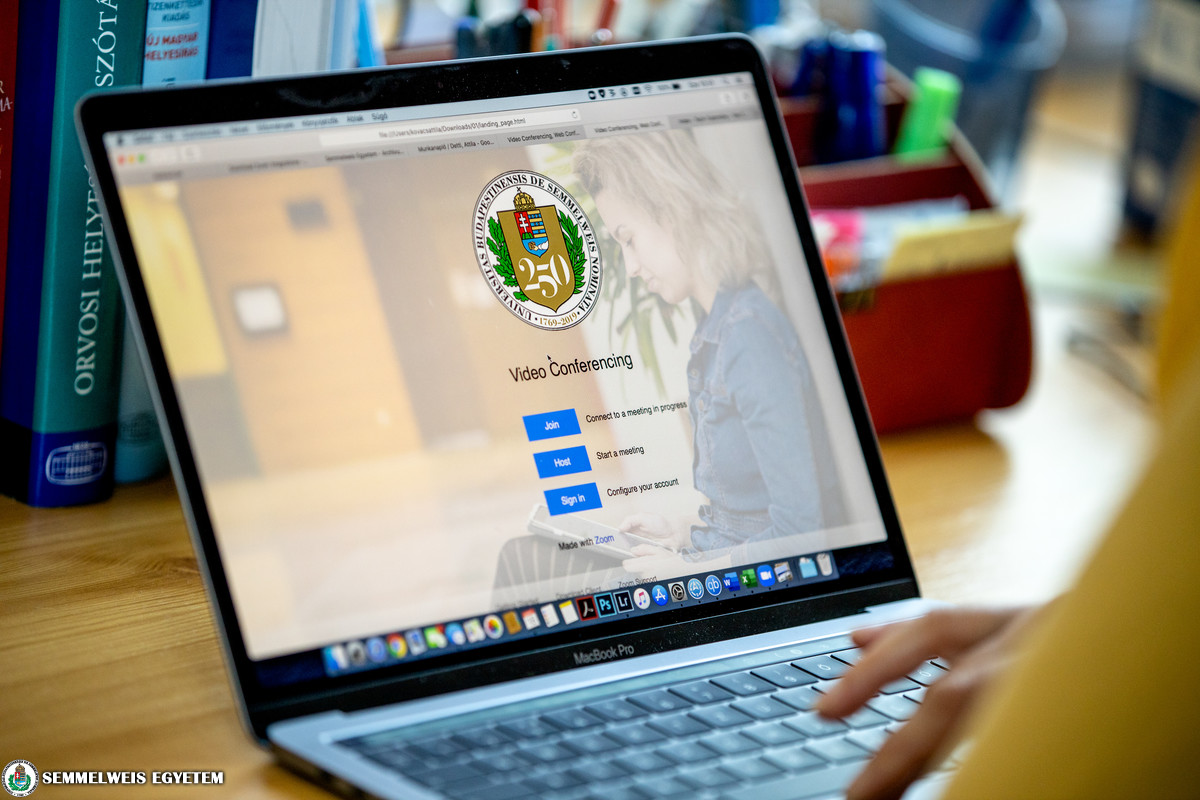Remote instruction, which was ordered following the epidemic situation caused by the novel coronavirus, will start on March 23 within the Moodle e-learning system used by the university. All of the courses of every university faculty will be available on this interface in three languages (Hungarian, English, German). Moodle uses the information on the courses available through Neptun, so after signing in, students will see the courses they took through Neptun on the site.
Dr. Béla Merkely, rector of Semmelweis University, ordered on March 11 the switch to remote instruction as of March 23. The related rector/chancellor’s order that was issued on the topic declared that all lectures and teacher consultations can be held in the framework of distance education, and some elements to reduce the demand for practical lessons can be incorporated (e.g. surgical broadcasts, demonstrations). The university’s Zoom system is available on the https://semmelweis.zoom.us website, and similar to Moodle, it requires the use of SeKA (Semmelweis Central Authentication) identification. For more information, visit the website of the Center for Educational Development, Methodology and Organization (OFMSZK) or the website of the E-Learning and Digital Content Development Directorate.
OFMSZK will be holding a five-hour online training course (which is flexible and can be completed multiple times) on the distance education system and its related methodology for the designated e-learning contact lecturers of the organization units and any other interested teachers, between March 16 and 20. You can find more information on the training on this link. “It is the important task of the e-learning contact persons, but in essence of every participant, to share the knowledge they gain at the training with the other lecturers within their units, thus helping to make the launch of the system as seamless as possible,” said Dr. Levente Kiss, the director of OFMSZK. He added that they will provide every possible help regarding the use of the site in order to assist the organizational units work out the details of their own courses. He also noted that an e-learning support team has been formed within the Students’ Union (HÖK) as well, in order to set an example in creating a remote instruction system that is student-oriented and takes into account the quality of education.
University workers and staff also have the opportunity to hold online meetings in Zoom either within the university or with international partners. Within the university’s Zoom system, lecturers and leaders employed by the university have received access with wider privileges (e.g. setting up meetings with hundreds of participants for an unlimited time), but every university worker that signs in with their SeKA ID can initiate conference calls, which external participants can join in a few simple steps by clicking on a link, and after installing Zoom on their computer or the Zoom app on their mobile devices. A SeKA ID or pre-registration is not required to join a meeting. Detailed information on online conferences and other uses of Zoom are available on the company’s website in several languages, including German, Spanish, French, Chinese, Russian, Korean and Portuguese.
Overall, the Zoom solution implemented by Semmelweis University makes it possible to schedule meetings on research, education and any other tasks, providing an efficient platform for collaboration even in the current circumstances, noted Dr. Kiss.
Eszter Keresztes
Translation: Tamás Deme
Photo: Attila Kovács – Semmelweis University



